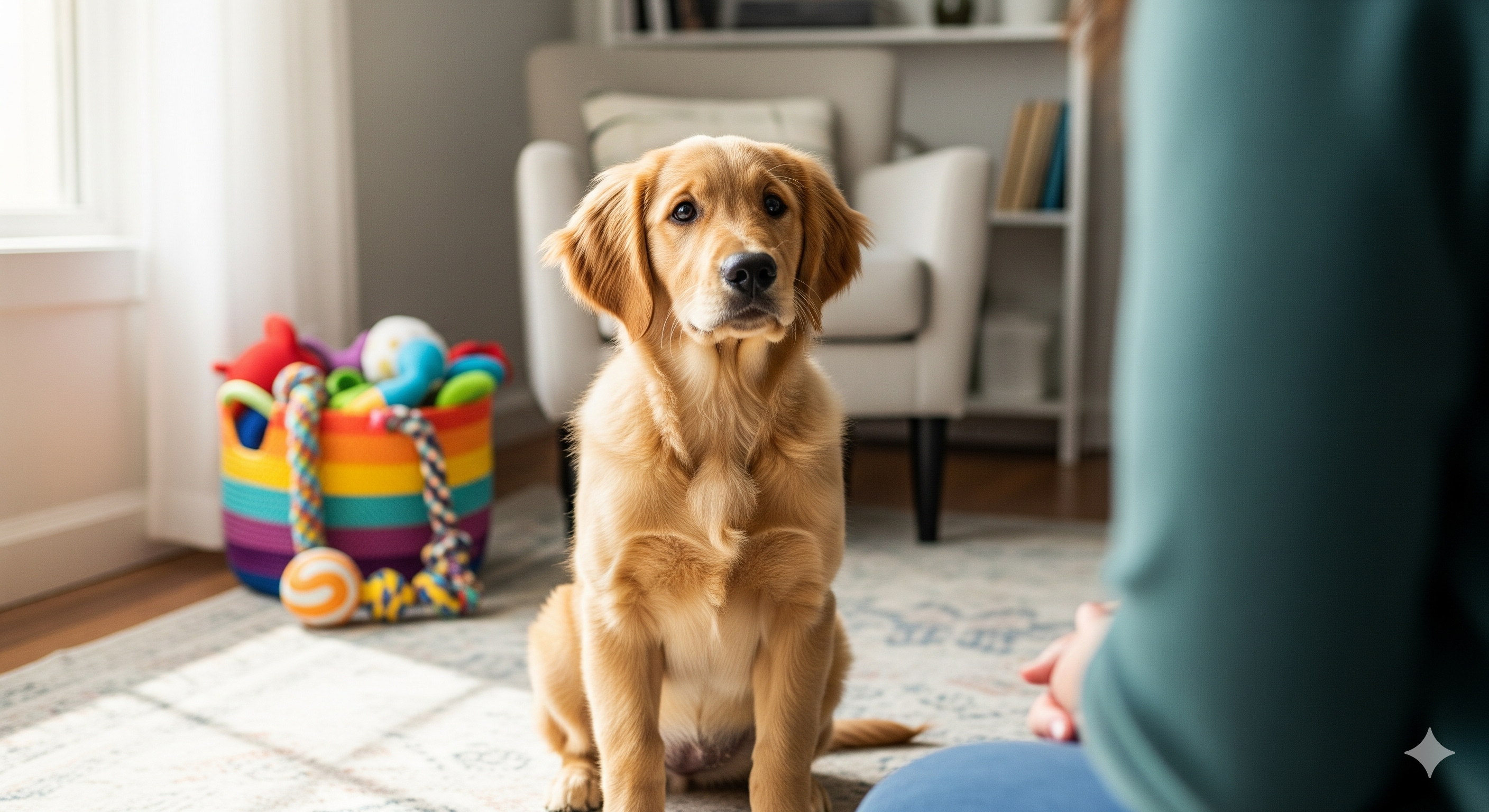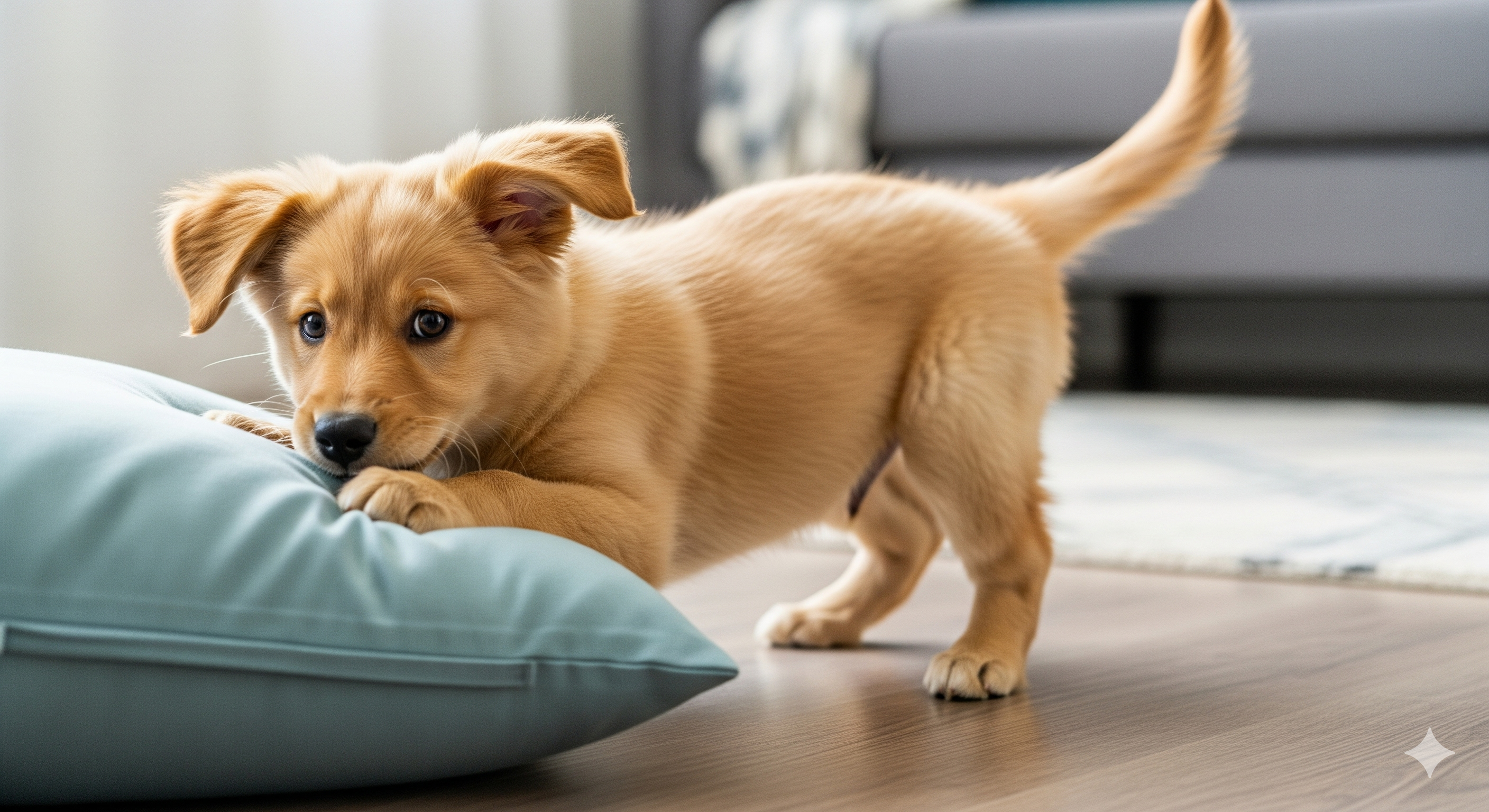Few puppy behaviors are as awkward and confusing for owners as humping (or mounting). That adorable ball of fluff suddenly transforms into a tiny, thrusting creature, often targeting legs, toys, other dogs, or even unsuspecting guests. While it’s a common behavior, it’s important to understand that puppy humping is rarely about sexuality. It’s typically a symptom of something else, and how you respond can either resolve the issue or accidentally make it worse.
This guide will demystify this embarrassing behavior, providing a clear, compassionate, and effective roadmap to manage it. We’ll move beyond simply suppressing the action and instead address the root cause for a lasting solution.
Here’s what we’ll cover:
✔️ The 5 surprising reasons puppies hump (it’s not what you think!)
✔️ How to tell the difference between normal play and a problem behavior
✔️ Step-by-step training techniques to redirect the behavior humanely
✔️ What to absolutely avoid doing (common mistakes that backfire)
✔️ When humping might signal an underlying medical or behavioral issue
Let’s tackle this uncomfortable topic with knowledge and confidence.
Why Do Puppies Hump? The 5 Main Reasons 🧐
Understanding the “why” is the first and most crucial step to addressing the behavior.
1. Overexcitement & Overstimulation 🎉
This is the #1 reason for humping in young puppies. When a puppy becomes overly excited during play, from meeting new people, or from getting a new toy, they often don’t know how to discharge that big energy. Humping becomes a default, impulsive outlet for that emotional overflow.
2. Play Behavior & Social Interaction 🐕
Humping is a normal part of the social repertoire for dogs. During play with other puppies, you’ll often see brief periods of mounting. It’s a way to engage, test social boundaries, and practice behaviors. In this context, it’s usually short-lived and reciprocal.
3. Stress, Anxiety, or Uncertainty 😥
Paradoxically, humping can be a coping mechanism for negative emotions. A puppy who feels anxious, stressed by a new environment, or unsure how to handle a situation may hump to self-soothe. It’s a displacement behavior that helps them manage their discomfort.
4. Seeking Attention 👀
Puppies quickly learn what behaviors get a reaction from their humans. Even negative attention (like yelling, pushing them off, or laughing) can be reinforcing. If humping gets you to engage with them, even scoldingly, they may use it as a strategy to get your focus.
5. Medical Issues 🩺
While less common in very young puppies, it’s important to rule out:
- Urinary Tract Infections (UTIs): Can cause irritation and lead to mounting behavior.
- Skin allergies or irritation: Itching in the genital area can cause the puppy to rub or mount objects for relief.
- Hormonal influences: Even in puppies that haven’t reached sexual maturity, hormonal changes can play a role.
How to Stop Puppy Humping: The 4-Step Action Plan 🛠️
Your strategy should focus on addressing the root cause and teaching an alternative behavior.
Step 1: Stay Calm and Interrupt Neutrally 🧘♀️</H3>
- Do NOT yell, laugh, or punish. Big reactions are interesting and rewarding to a puppy.
- Simply say a calm, neutral word like “Oops” or “Ah-ah.”
- Gently guide them off or encourage them to get off on their own. Avoid rough physical handling.
Step 2: Identify and Remove the Trigger 🔍
- Overexcitement? Help them calm down before play gets too rowdy. Look for early signs like zoomies or shark-like nipping.
- Seeking attention? Withdraw attention completely. Turn your back, cross your arms, and leave the room for 30 seconds if needed.
- Anxiety? Identify and minimize the stressor. Create a safer, quieter environment.
Step 3: Redirect to an Appropriate Behavior 🔄
This is the most important step. You must teach them what to do instead.
- Ask for a known, incompatible behavior like a “sit,” “down,” or “go to your mat.”
- Once they perform the alternative behavior, reward them lavishly with treats and calm praise.
- This teaches them: “Sitting politely gets me good stuff. Humping makes all the fun stop.”
Step 4: Provide an Outlet for the Root Cause 🏃♂️
- For excitement: Ensure they get enough physical exercise and mental stimulation daily. A tired puppy is a well-behaved puppy.
- For anxiety: Build confidence through training, provide puzzle toys, and consider calming aids like a snuggle puppy or Adaptil diffuser.
- For play: If they hump other dogs during play, calmly leash them and give them a 1-minute “time out” to calm down before rejoining the play session.
What NOT to Do: Common Mistakes That Make It Worse ❌
🚫 DON’T Punish Physically: This can create fear and anxiety, which may actually increase the humping behavior.
🚫 DON’T Use Deterrent Sprays on your legs or furniture. This doesn’t address the underlying cause and can cause skin irritation.
🚫 DON’T Assume It’s “Just Dominance”: The dominance theory has been largely debunked in dog training. This outdated mindset leads to confrontational methods that damage your relationship.
🚫 DON’T Assume They’ll Grow Out of It: While it can be a phase, an unreinforced behavior is more likely to fade. A reinforced one can become a lifelong habit.
When to Seek Professional Help 🤝
Consult a certified professional dog trainer or a veterinary behaviorist if:
- The humping is frequent, intense, and doesn’t respond to consistent redirection after several weeks.
- The behavior is accompanied by other signs of anxiety (destruction, barking, panting).
- You suspect an underlying medical issue. A vet check is always the first step if the behavior is new and persistent.
Final Tips for Success 🌟
- Be Consistent: Everyone in the household must respond the same way.
- Be Patient: It takes time to change behavior. Manage your expectations.
- Spay/Neuter: While not a magic bullet, spaying or neutering can reduce hormonally influenced mounting behaviors that emerge in adolescence.
- Manage the Environment: If your puppy always humps a certain teddy bear, remove the teddy bear from circulation for a while.
Final Checklist for Addressing Humping ✅
☑️ I have ruled out medical issues with a vet visit.
☑️ I can identify my puppy’s likely trigger (excitement, attention, anxiety).
☑️ I have a plan to interrupt neutrally and redirect to a “sit” or “down.”
☑️ I am committed to withholding attention for the behavior.
☑️ I am ensuring my puppy gets enough physical and mental exercise.

Puppy scooting, where a dog drags its bottom across the floor, is a behavior that almost every owner will witness at some point. While it often looks funny, it’s usually a sign that your puppy is experiencing some form of discomfort. While often harmless, it’s important to understand the root cause to provide your puppy with relief. The most common causes include irritated anal glands or parasites. For a complete breakdown of the potential reasons, from the simple to the serious, and how to address each one, our guide on Why Is My Puppy Scooting? Causes & Fixes has all the answers.






